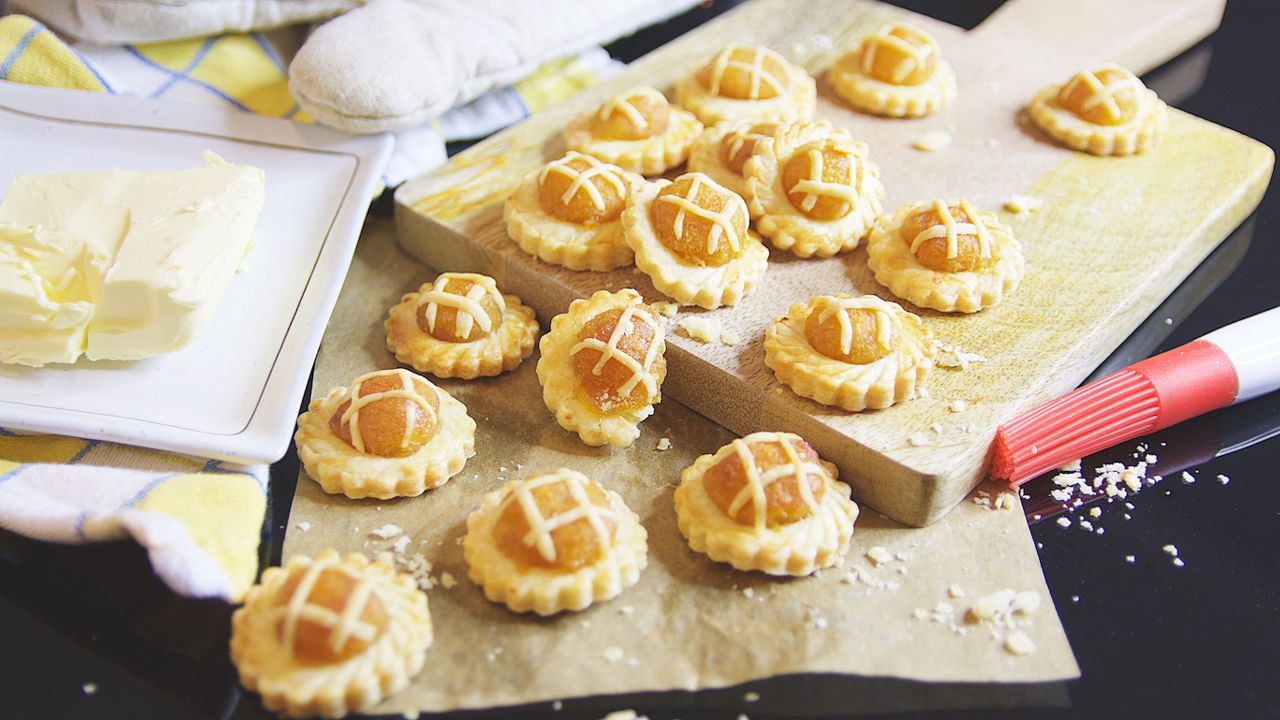Homemade traditional pineapple tarts are the best treats during Chinese New Year. They are made into small bite-sized pastries filled with homemade pineapple jam. Alternatively, another variant has the pineapple jam wrapped by the pastry itself. The best pineapple tart should have a lightly dense dough to hold the pineapple jam and yet falls apart to melt in the mouth. Besides, the sweetness of the tart should come from the pineapple jam.
How did pineapple tarts become so popular?
History of pineapple tarts
Malacca was under the colony of Portuguese for 130 years. When the Portuguese left, their influence were seen in the architecture, culture and food in Malacca. Moreover, tarts are native to Portugal. The typical technique of rubbing butter into the flour to make the dough flaky is exactly the way tarts are made in Portugal. Since pineapples were in abundance, the locals used them to make pineapple tarts.
Pineapples for Chinese New Year
The term ‘ong lai’ in Hokkien (one of the Chinese dialects) means pineapple but at the same time it also sounds very similar to ‘prosperity/fortune comes’. This is why pineapple tarts are popular during Chinese New Year to either welcome guests or as a gift to friends and relatives.
Using butter instead of margarine
Traditionally, Nyonya/Peranakan pineapple tarts use margarine to make the dough dense. This gives the crunchy effect instead of being crumbly. Besides that, the use of margarine gives these cookies a longer shelf life compared to when using butter. Therefore, many traditional cookies or snacks use margarine instead. Having said that, you may use butter, if that is your preference. However, do note that the dough would be more crumbly. As salt is added to the dough, use unsalted butter or omit salt from the recipe if you prefer to use salted butter.
What causes pineapple tarts to be flaky?
The act of rubbing margarine or butter into flour makes the dough flaky. This method leaves little lumps of margarine or butter in the dough. When these little lumps melt during the baking process, the dough will incorporate "air" in its structure which then makes it flaky. Therefore, it is important not to over knead the dough or the pastry would end up being hard.
Making pineapple jam in advance
When preparing to make these tarts, it is advisable to cook the pineapple jam at least one night before. It can be kept refrigerated for up to a week or kept frozen for up to 6 months. Before using frozen pineapple jam, thaw it first.
Storage of pineapple tarts to prevent mould
Pineapple tarts turning mouldy even when stored in air-tight containers is due to the presence of too much moisture. Store pineapple tarts which are cooled to room temperature in an air-tight container away from the sunlight. They can be kept for up to 3 months. Otherwise, keep them refrigerated for up to 6 months.
Canned pineapples
In countries where pineapples aren't native, it may be best to use canned pineapples. The best choice would be those which are not canned in sugared water. For this recipe, I'd recommend using 3 cans of pineapples as the core is usually removed. You may end up with extra pineapple jam but it would be better than having lack of it. Do reduce the amount of sugar accordingly as most canned pineapples are already sweetened.
You may had noticed in the video that there is too much pineapple jam on the tarts for your liking. You can lessen the amount of pineapple jam as per your preference. If you do so, remember to double the amount of ingredients for the dough so that you would not end up with excessive pineapple jam. The process of making these pineapple tarts is undeniably time-consuming but once you are done, you will agree that it is well worth the effort. Trust me, you will be beaming with pride too!
This recipe yields about 40 pieces of pineapple tarts or about 80 pieces if you double the amount of ingredients for the dough.

